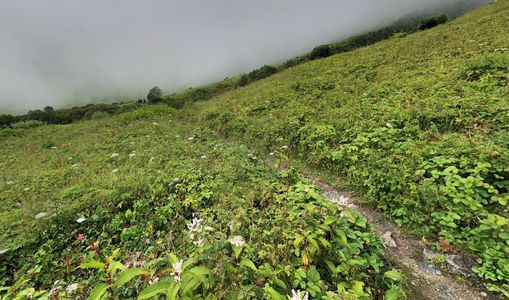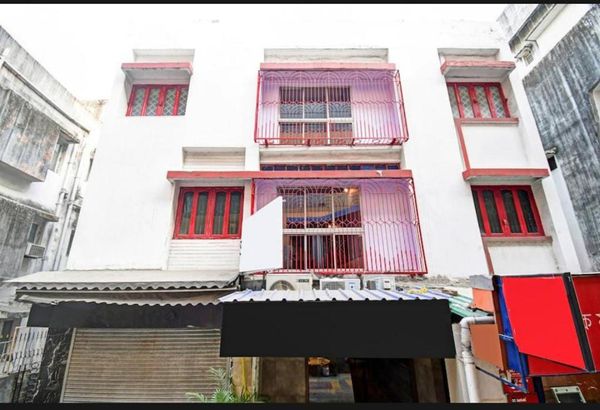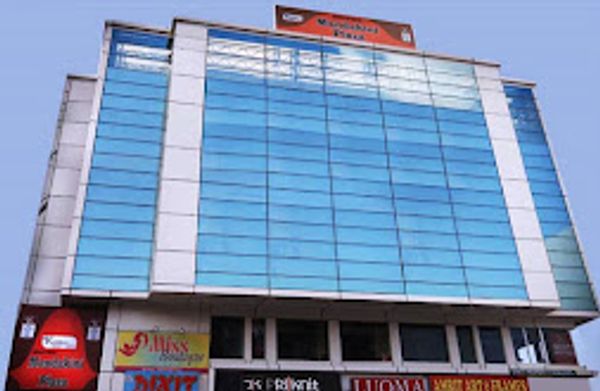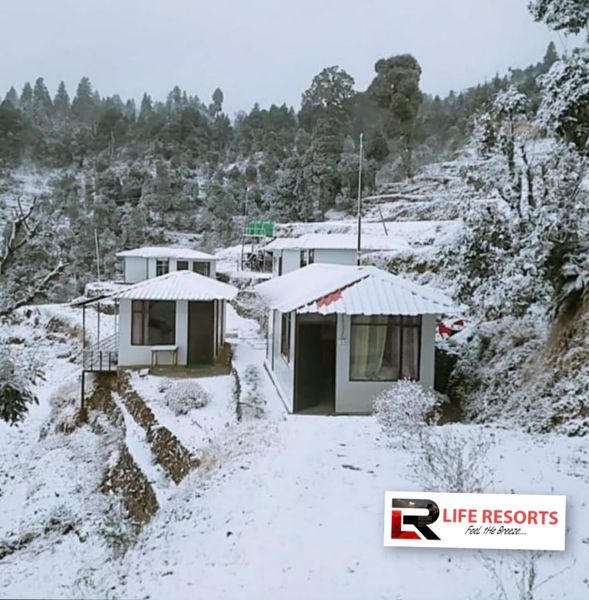Monsoon in the Valley of Flowers: Rainfall, Mist & Blooms
 Ankit Rawat
25 Jul, 2025
7 mins read
47
Ankit Rawat
25 Jul, 2025
7 mins read
47

Tucked away in the Garhwal Himalayas of Uttarakhand, the Valley of Flowers comes alive during the monsoon. From July to early September, this UNESCO World Heritage Site transforms into a lush paradise. The rains bring with them rolling mist, fresh green landscapes, and thousands of blooming wildflowers. For nature lovers, trekkers, and photographers, monsoon is the best time to experience the valley in its full glory.
When the Rain Transforms the Valley
The Valley of Flowers opens its gates to visitors every year around June, but it is during the monsoon months that it reaches its peak beauty. As the rain begins to fall, the entire landscape changes. Dry paths become streams, rocky slopes turn into soft green meadows, and the valley starts filling up with color.
Rainfall is frequent but not harsh. Most of the time, it’s light drizzle or short bursts of rain followed by mist and cloudy skies. These weather changes create a mystical atmosphere. The mountains are often covered in fog, making the valley feel like a hidden dreamland.
The Blooming Season
Monsoon is the blooming season in the Valley of Flowers. Over 600 species of flowers blossom during this time. You’ll see patches of blue, yellow, red, pink, and white stretching as far as your eyes can see. Some of the popular flowers that bloom during the monsoon are blue poppies, cobra lilies, orchids, marigolds, and daisies.
Each week brings new colors. Early July is the beginning of the bloom, and by mid-July to August, the valley is in full swing. This natural show of color lasts only a few weeks, which is why many people time their visit carefully to catch the peak bloom.
Mist and Mystery
The mist in the valley is not just beautiful but also adds a sense of mystery. It often rolls in suddenly, covering everything in a white veil. You might be walking on a sunny trail one moment and find yourself surrounded by thick fog the next. This constant shift in weather gives the valley a unique charm.
For photographers, the mist and light make for amazing shots. The combination of rain-soaked flowers, cloudy skies, and glowing green meadows create stunning natural scenes that don’t need any filter or edit.
Trekking During Monsoon
Reaching the Valley of Flowers is not too difficult but does involve a bit of a trek. The journey starts from Govindghat, then a 13-kilometer trek to Ghangaria, which is the base village. From Ghangaria, it’s another 4 kilometers to the valley.
During monsoon, the trail can be slippery and muddy, so proper trekking shoes and a raincoat are a must. Still, the experience is worth every step. Waterfalls gush down the hills, small streams cross your path, and birds chirp all along the way.
Trekkers should start early in the morning to avoid afternoon rain. Also, weather can change quickly in the mountains, so it’s best to carry a waterproof backpack and keep essentials dry.
Local Life and Travel Tips
Ghangaria village is the last settlement before the valley. It has a few simple hotels and guest houses. During the monsoon, the village is busy with trekkers heading either to the Valley of Flowers or to Hemkund Sahib, a nearby pilgrimage site.
Here are a few travel tips for visiting the valley during monsoon:
- Carry rain gear: A rain jacket, poncho, and waterproof covers for your bag are essential.
- Wear good trekking shoes: The path gets slippery, and ankle support helps.
- Pack light: Only take what you need. Carrying less weight makes the trek easier.
- Stay informed: Weather conditions and landslides can affect the route, so check the local forecast and updates before heading out.
- Respect nature: Don’t pick flowers or litter. The valley is a protected national park and needs to be preserved.
Why Monsoon is the Best Time
Many people avoid mountains during monsoon due to landslides or rain. But the Valley of Flowers is an exception. This is the only time of the year when the valley shows its true colors. The rain doesn’t spoil the experience it enhances it. The air is fresh, the earth is fragrant, and every corner looks like a painting.
While the monsoon trek may come with its challenges, the reward is unmatched beauty. Few places on earth offer this kind of natural wonder in such a short time. If you're looking for peace, beauty, and a little adventure, the Valley of Flowers during monsoon is a journey worth taking.
Written By:
Ankit Rawat



Hotels at your convenience
Now choose your stay according to your preference. From finding a place for your dream destination or a mere weekend getaway to business accommodations or brief stay, we have got you covered. Explore hotels as per your mood.


